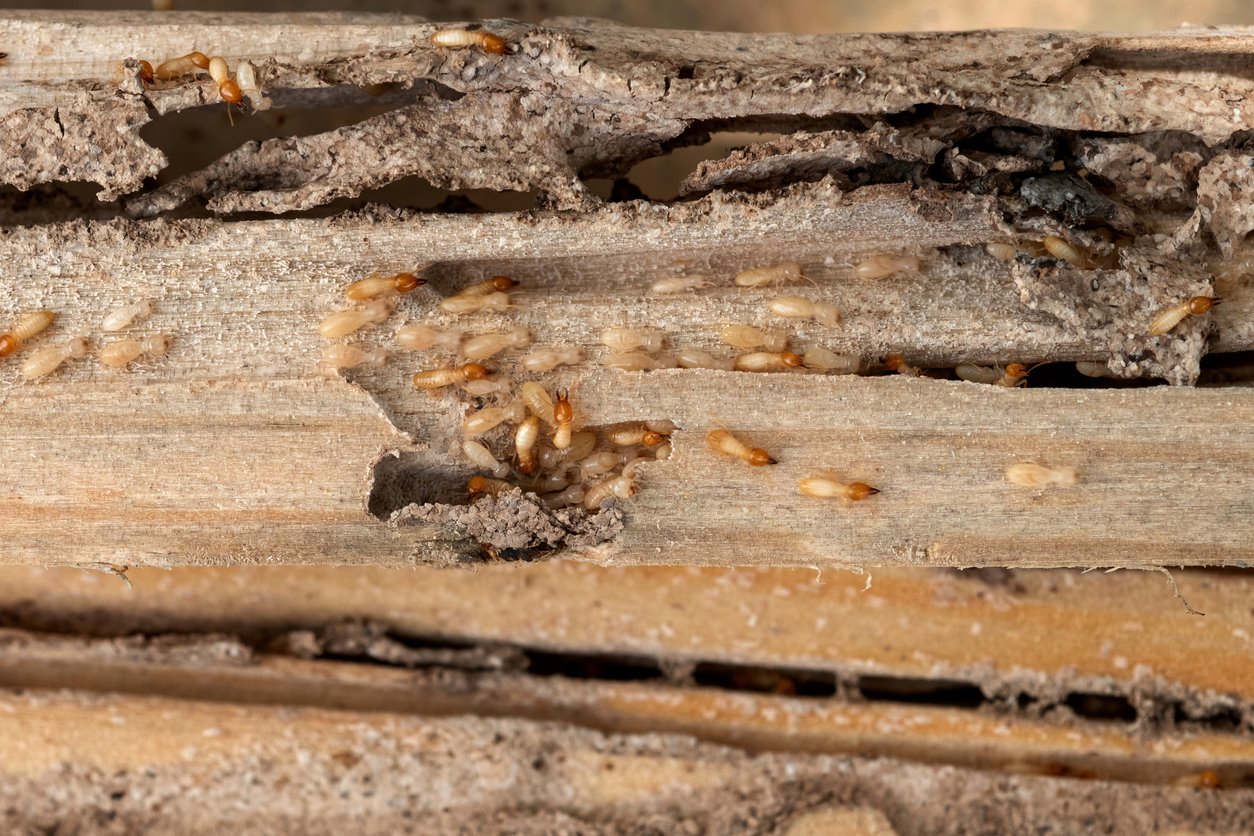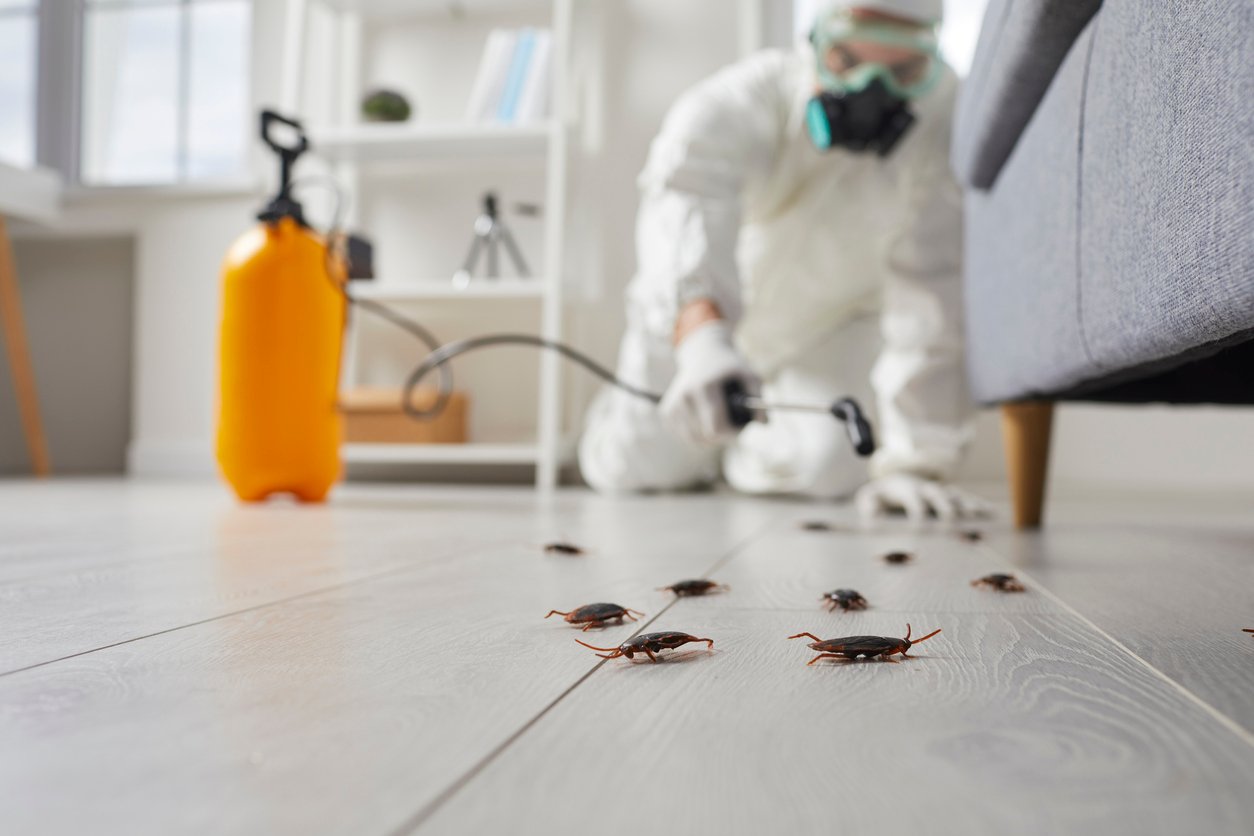How to Pest Proof Your Home

Unwanted pests can get into your home with very little help. A small crack, a bit of moisture, or a forgotten crumb may be all it takes to invite them inside—and once they’re there, it can be tough to get them out. That’s why the smartest strategy is to pest-proof your home before problems start.
This guide shares proven steps you can take to help keep common pests like ants, cockroaches, rodents, and spiders out of your living space. From sealing entry points to removing the food and water sources that lure them inside, these prevention tips help protect your home and make it a less attractive place for pests.
Start with a Home Inspection
The first step in pest prevention is identifying where pests could enter your home or where they might already be hiding. Walk through your home and look for cracks, gaps, and signs of pest activity. Catching these early signs helps you fix pest issues before they become bigger problems. Focus on dark, damp, or undisturbed areas where pests tend to settle in where they won’t be noticed.
What to check:
- Cracks and gaps around doors, windows, siding, and foundations – Ants, spiders, cockroaches, and even mice can enter through tiny openings.
- Torn window screens or unsealed vents and flues – Flying insects and small rodents often use these gaps to enter attics or living spaces.
- Dark corners under sinks and behind appliances – Common hiding spots for cockroaches, silverfish, and mice.
- Grease marks, droppings, or musty smells – Signs of pest activity, especially from rodents or roaches.
Pro Tip: Use a flashlight and check behind, under, and around appliances and cabinets, especially in kitchens, bathrooms, and storage areas. These dark, undisturbed spaces are some of the most common hiding spots for pests like cockroaches, rodents, and spiders.
Seal Entry Points to Block Invaders
Once you’ve identified vulnerable spots around your home, take action to seal them up. Most pests won’t go out of their way to break in—they take advantage of easy openings. By closing off those gaps early, you make your home less inviting and stop problems before they start. Focus on these high-risk entry areas:
- Foundation cracks and siding gaps – Ants and earwigs often enter through these low points.
- Window and door frames – Rodents and cockroaches can enter through small, worn seals.
- Utility openings for pipes and cables – Mice and spiders commonly slip in through gaps here.
- Attic and crawlspace vents – Birds, bats, and insects may enter through unsecured mesh or open vents.
How to Seal Up Entry Points
When sealing entry points to keep out pests, use durable materials that can hold up to weather, moisture, and gnawing.
- Apply caulk to seal small cracks along window frames, door trim, siding joints, and foundation lines.
- Add weather stripping around doors and windows where you feel drafts or see light peeking through.
- Stuff copper mesh into gaps around pipes, cables, and utility lines to block rodents and insects from entering.
- Use expanding foam over copper mesh or in hard-to-reach crevices to create a long-lasting seal.
- Install door sweeps on all exterior doors to eliminate gaps along the threshold.
- Inspect window screens and vent covers for rips or loose edges, and repair or replace them to keep out flying insects.
These simple, targeted fixes create a physical barrier that helps prevent pests from sneaking into your home unnoticed.
Declutter to Eliminate Nesting Zones
Cluttered spaces provide ideal conditions for pests, where they can hide from the elements and avoid detectionKeeping storage areas tidy removes easy nesting zones for many household pests. Organized spaces make it easier to clean, inspect, and maintain your home—key habits that support long-term pest prevention.
Here are clutter-prone areas where pests especially like to hide:
- Garage and basement – Rodents, spiders, and cockroaches are drawn to cardboard boxes, stacked newspapers, and unused equipment.
- Closets and under beds – Spiders and silverfish hide in undisturbed areas with fabric and dust.
- Pantries and utility rooms – Ants and roaches hide in cluttered corners, behind shelves, and near warm appliances.
Decluttering Tips
Once you’ve identified clutter-prone areas, the next step is to organize them in a way that discourages pest activity. Long-forgotten items and soft materials often provide the kind of shelter and cover pests seek out. Pests are drawn to materials they can chew, nest in, or hide behind.
To make your storage areas less appealing to pests:
- Swap cardboard boxes for sealed plastic bins with tight-fitting lids. Cardboard absorbs moisture and can break down over time, increasing the risk of pest activity.For example, cockroaches feed on cardboard fibers, and rodents often shred it for nesting.
- Keep items off the floor by placing bins on shelving or pallets to limit access points, make cleaning easier, and prevent nesting.
- Leave a few inches between stored items and walls to improve visibility and airflow and to eliminate hidden zones that are tough to inspect.
- Rotate and inspect stored belongings regularly to prevent long-term buildup and detect any signs of pest intrusion early.
Simple changes to how you store and organize household items make it harder for pests to hide—and easier for you to notice if something’s wrong.
Remove Food and Water Sources
Pests often enter homes in search of reliable access to food and moisture. Moisture provides not only the water they need to survive but also the damp conditions many pests require to reproduce. Cockroaches, silverfish, and drain flies are especially drawn to areas like leaky pipes, sinks, and humid corners where they can lay eggs and multiply quickly.
Use these daily and weekly habits to eliminate the food and moisture pests are looking for:
- Wipe down counters and tables after meals – Ants follow scent trails to sugary residue and crumbs.
- Store dry goods in airtight containers – Pantry moths, ants, and roaches chew through paper and cardboard to reach the food inside.
- Sweep and vacuum regularly – Crumbs under appliances or baseboards attract roaches and rodents.
- Fix dripping faucets and leaking pipes – Cockroaches and silverfish thrive in damp environments, which provide water and ideal conditions for breeding, especially under sinks.
- Empty pet food bowls at night and store food in sealed containers – Mice and ants are drawn to leftover kibble and crumbs.
Pro Tip: Rinse recyclables before tossing them, as residue from cans or bottles can attract flies and roaches.
Clean Up the Yard
The outside of your home is often where pest problems start. Overgrown landscaping, standing water, and clutter around the foundation provide ideal conditions for pests to breed and move indoors.
Tackle these yard tasks to cut down on common outdoor pest activity:
- Trim plants and tree branches at least 1 foot from your home – This removes “bridges” for ants, rodents, and spiders.
- Clear leaves, mulch piles, and yard debris – Moisture and cover attract earwigs, millipedes, and rodents.
- Store firewood 20+ feet from the house and off the ground – Rodents, termites, and cockroaches use stacked wood as shelter.
- Clean gutters and downspouts – Clogged, moist areas attract mosquitoes and can lead to moisture-loving insect activity.
- Empty standing water from pots, toys, and birdbaths – Mosquitoes lay eggs in stagnant water and can breed quickly.
Landscaping with pest control in mind helps reduce infestations before they ever reach your walls.
Use Natural Deterrents for Extra Protection
Natural pest deterrents can complement your overall pest prevention efforts, but they’re rarely a complete solution on their own. . These methods may help discourage pest activity in specific areas, but they usually don’t address the underlying concerns that allow pests to stick around and multiply. That said, natural methods can offer low-effort ways to discourage deter pests on the spot. Here are some helpful household repellents and where to use them:
- Peppermint oil on cotton balls – Repels mice and ants when placed near baseboards or entry points.
- White vinegar spray – Breaks up ant scent trails and can deter roaches on kitchen surfaces.
- Bay leaves – Tuck them into pantry shelves or containers to deter pantry moths and weevils.
- Citrus peels – Place them on windowsills or near vents to discourage spiders and cockroaches.
When to Call in the Professionals
Even with consistent DIY prevention habits, pests can still find their way inside. If you’re still seeing activity despite your efforts, it may be time to bring in expert, professional help.
Moxie Pest Control starts with a detailed inspection to check for entry points, excess moisture, At Moxie Pest Control, we start with a thorough inspection—inside and out—to identify entry points, moisture issues, and other conditions that may be contributing to pest problems.. Our safety-minded Local Field Experts apply targeted treatments based on what they find and offer straightforward advice for addressing anything that could lead to future infestations. We also provide clear, practical guidance to help reduce future activity and maintain a comfortable home environment.
Why homeowners turn to Moxie:
- Instant online quote
- Fast response and easy online scheduling
- Local Field Experts trained daily to deliver consistent, expert service
- Comprehensive treatments that are pet- and family-friendly
- Neighborly service with a smile
- Unlimited, free warranty services between scheduled visits (for clients on a year-round plan)
We know how stressful it can be to take all the right prevention steps and still find pests in your home. That’s where our pest control services come in, providing reliable solutions that address the problem at its source.
Explore our full list of pest control locations to find a Moxie team near you.



